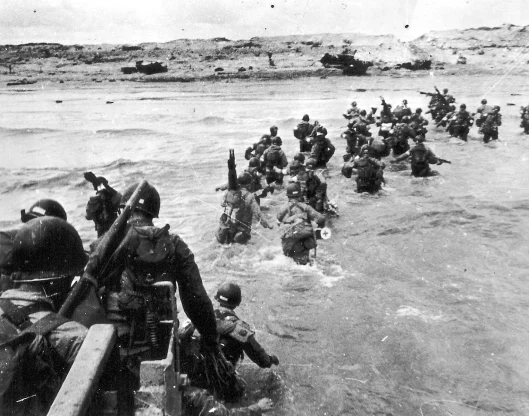Tags
absurdity, adolescence, book review, counterintelligence, historical fiction, J.D. Salinger, Jerome Charyn, literary fiction, post-traumatic stress, psychological observation, surreal events, Walter Winchell, World War II, writer's block
Review: Sergeant Salinger, by Jerome Charyn
Bellevue, 2021. 286 pp. $29
When we first meet Sonny Salinger, he’s twenty-three, it’s April 1942, and he’s not liable for military service because of a heart murmur. He has the luxury, therefore, to visit the Stork Club, the famous Manhattan night spot, to see his sixteen-year-old girlfriend, the impossibly beautiful Oona O’Neill (the Nobel Prize-winning playwright’s daughter).
The club fashions her a debutante, an attraction for visitors but also, be it known, for lecherous power brokers like the newspaper columnist Walter Winchell, a regular there. Speaking of regulars, Sonny meets his idol, Ernest Hemingway, and dances a rhumba with Oona that Fred Astaire would have been proud of. To look at Sonny, a gawky six-footer with big ears, you wouldn’t think he could dance a step or court a great beauty.
But Sonny Salinger, whose real name is Jerome, has more to him than anyone knows, and his life is about to change, with consequences for him and for American literature.
Heart murmur or no, he’s drafted. At first, he has a desk job with Counterintelligence, stationed in Devon, England. But come D-Day, he’s part of the second wave at Utah Beach, for the boys from counterintel have to interrogate prisoners.
However, little happens as planned in wartime, so Sergeant Salinger, though he questions suspected enemy agents, French townspeople, and captured soldiers from time to time, spends most of his war firing a rifle. He earns five citations for bravery.
But Sergeant Salinger isn’t a war story in the strict sense. It’s about a writer who gradually loses his mind because of what he sees and does as a soldier. As we know, J. D. Salinger recovered enough of his faculties to write Catcher in the Rye, a notable collection of short stories, and a couple lesser works, none published after the 1960s.
What stilled his writer’s voice temporarily after the war and eventually for good? What drove him to seek seclusion for decades? Charyn offers answers. Though many scenes seem improbable on the surface—his stock in trade—quick research will show that the facts are correct. Charyn may exaggerate how these scenes unfolded, as a bold novelist will, but if the details appear improbable or surrealistic, the effects are entirely plausible and well grounded. And as with other novels of his I’ve read, he has a gift for bringing real-life figures to the page, which is often a treat.
In those novels, I’ve admired Charyn’s keen eye for historical detail, which again figures here. That’s as it should be, for if we’re to believe that Salinger breaks under the strain of combat (and its aftermath), we have to see what disturbs him. Here’s his first look at Utah Beach, a relatively benign moment:
He leapt out of the landing craft into a wallop of water, flailing a bit, like a bat lost in a storm. Sonny had a life preserver that was almost a strangulation cord, plus a combat pack on his shoulders that pounded as the water pounded. He couldn’t afford to get his manuscripts wet. He had the melody of words inside his skull as he could hear the terrible whine of bullets all around him. A dogface fell and disappeared into the undertow, then resurfaced with one of his fingers shorn off.
But the following days and weeks provide a nonstop horror show in which you wonder how things could be worse, only to watch them spiral downward. It’s not remarkable that Salinger cracks; rather, it’s remarkable how much he tolerates when others fall to pieces. And part of what bothers him is the hypocrisy his superiors display, as when small-time Nazis take their punishment while rocket scientists and high-ranking intelligence officers get flown to the States and given jobs.
The portrait of the writer as a young man wouldn’t be complete without portraying his family. I must confess I doubted some of his parents’ antics, but I believe they ground their son into dust, and how that might have happened. The writer lauded for his depiction of adolescence isn’t allowed to grow up or have his own thoughts or feelings. Only his older sister, Doris, helps him escape that booby-trapped existence.
I found Sergeant Salinger hard to take sometimes, mostly because I wasn’t sure whether I was reading a deliberately absurd novel like Catch-22, in which we’re meant to laugh until we cry, or a re-creation of actuality. Charyn’s blunt, unsparing prose carries the ring of truth, yet what happens seems incredible, a contradiction that can be hard to stay with.
But the psychological observations, some of which occur through fantasy sequences, seem spot-on. Whether J. D. Salinger actually suffered what Charyn describes is, in the end, immaterial; he might have, and that’s worth thinking about.
Disclaimer: I obtained my reading copy of this book from the public library.


So glad you got so much out of Jerome Charyn’s Sgt. Salinger and took – I am Jerome’s wife and I know that researches extensively to get it right. He loved “For Esmé—with Love and Squalor” so much – it was that Salinger he needed to bring to life, before his descent, and look for the why. Salinger was almost Jerome’s contemporary, whom he read in his teens. As a thank you, I’d love to put you on our mailing list for a galley of his next biographical novel (on Maria Callas.) You can find me at jcpress@writemail.com Warmly, Lenore Riegel
LikeLike
Thanks for visiting. I always like hearing reactions to my reviews, and I’m glad mine has caught your notice–not for the first time, if I recall correctly. (Cesare, I think, was the previous one.)
Larry
LikeLike